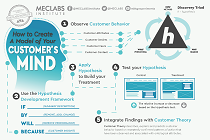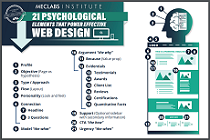November 01, 2006
Case Study
SUMMARY:
If you think you could be generating more sales leads, you definitely should check out this new Case Study.
Discover how HomeGain simultaneously nurtures consumer leads for and helps its real estate partners close on them. Includes strategies on:
-> Separating those who are truly interested from the tire kickers.
-> Managing leads when they’re coming from multiple sources.
-> Monitoring affiliates’ performance.
|
|
CHALLENGE
“A lot of online Realtors believe, at first, that the leads will automatically convert,” says Matt Malmgren, Training & Coaching Manager at HomeGain.com Inc. “We set the expectations high from the beginning that they are going to have to work the lead. They’re entering into the home-buying cycle very early, so that means the Realtor has to stay on top of them and continue to develop communication.”
Indeed, traditional real-estate players are used to outdoor and print ads delivering leads (actual people) straight into their office. Simply put, more small steps are involved in closing a sale when the prospective home buyer starts out as an email address, and it’s a process that must be learned.
So it’s not enough that HomeGain has built a network of affiliates to feed a steady stream of leads to their partners. Of course, since the company makes revenue by procuring leads, they also have a huge interest in educating their partners on how to close the marketing loop.
But before that, they have to measure leads in a way that matters. Here are the key ingredients in how HomeGain gets it all done.
CAMPAIGN
HomeGain cultivated a brand triangle that pinpointed the three phases in which real-estate consumers shop – selling a current home, getting a mortgage/refinancing and finding a new home.
While there’s traffic flowing into the Web site from a trifurcate of angles, it also was arriving from a variety of sources, including Google, Yahoo!, MSN, USAToday.com’s real estate classified section, a large number of affiliates and a slew of local content partners.
HomeGain had to snatch qualified leads from the considerable traffic flow in order to best serve the end users who pay for them – real estate agents. To do this, they followed four tactics:
Tactic #1. Separate good leads from the not-so-good
HomeGain qualified leads in four ways:
A. Registrants who provided optional information while filling out forms were marked as priority leads when compared to those who only gave the bare minimum about who they were and what they were looking to buy/sell.
B. By requiring shoppers to register with a user name and password, they effectively weeded out leads that might get entered by third parties, such as mortgage brokers.
C. They monitored new affiliates closely to track their performance and, in some cases, terminated relationships that produced bad leads early on.
D. They uniformly didn’t let affiliates offer incentives or discounts, which would lure people into the system who had no serious interest in purchasing or selling a house.
“Plus, we don’t use any data-feed leads at all,” notes Marie Nilsson, Senior Business Manager Affiliate Marketing at HomeGain. “We make sure that all leads are filled out on our site and on our forms.”
HomeGain also didn’t resell its leads. Once it went to a Realtor, it’s theirs.
Tactic #2. Split prospects into groups
HomeGain.com worked as a top-shelf qualifier because site visitors first search by state, then by city and then by suburb or neighborhood while becoming a lead. In fact, prospects were split into two groups as soon as they clicked the “Buyers Start Here” button.
They were asked:
o If they are ready to buy a home in the next six months
o If they know the areas in which they'd like to buy
o If they have an affordable price range
o If they are ready to find a local agent
Viewers who clicked on the “Tell me more” button were taken to a Web page that helped them focus on their intentions. But people who clicked, “Yes, I’m ready,” were shuttled to a more-advanced set of questions and buying-based details.
Tactic #3. Help Partners Convert Leads
Compared to the recent past, today’s consumers are researching months and months longer before buying or selling their homes, so online leads must be treated with a Web-centric patience and care. HomeGain’s client-services team helped agents learn online best practices, such as when to send email and what to write under several types of scenarios.
Tactic #4. Lead follow-up
Internet consumers expect to be contacted immediately, so the team instructed agents on how to receive leads via mobile devices and follow up on them in a timely fashion. The agents also had a lead management system at their disposal, which allowed them to keep track of each customer’s specific realty interests.
“Additionally, the way our Realtor program works is that if you have your sale proposal signed into the system, it will be sent out almost instantaneously to the lead,” says Louis Cammarosano, General Manager at HomeGain. “As soon as the consumer’s email address is validated, the proposals will go up to him or her where they can look over the Realtors’ offers. It helps to get the Realtors in front of the consumers right away.”
Other key HomeGain instructions:
-> Home buyers value expertise, so industry veterans should trumpet their experience in subject lines and headlines whenever they can.
-> Because Realtors can only identify the lead via an email address at first, HomeGain taught partners to respect privacy and let the consumer drive the relationship in terms of acquiring more personal information such as a telephone number.
-> Be professional with your Web site photography – images of your favorite grandchild or pet parakeet won’t endear consumers who’d much rather think about one the biggest investment in their lives.
RESULTS
Even with the softening in the real estate market, "our traffic numbers and network of agents are holding up well, and we are still growing as a company,” Nilsson says.
HomeGain’s lead qualifiers have been tantamount to their rise as a Web success. Without the obvious effectiveness of their funneling system and the focus on quality, budget-conscious Realtors would have quit paying for these leads long ago and upped the ante in other advertising areas.
The company tracks leads from the time they enter their Web site until a sale occurs, empowering HomeGain to not only help keep a healthy inventory moving but also measure the actual performance of traffic sources.
Teaching the proverbial old dogs new tricks is never easy, but Cammarosano’s team have their techniques down to a science. It would have been especially easy for the brick-and-mortar crowd to get these email leads and throw their hands up in the air. But they put together a back-end program that hold Realtors’ hands so the hand-raisers don’t go to waste. No small accomplishment.
HomeGain’s consumer-conscious privacy policies are always money in the long term, and the seven-year-old company has maintained a reputable three-tiered brand because of them.
Useful links related to this article
Creative samples from HomeGain’s Lead Qualifiers:
http://www.marketingsherpa.com/cs/homegain/study.html
Outlandish – the tool HomeGain.com uses to target landing pages:
http://out.landi.sh/
HomeGain.com:
http://www.homegain.com









